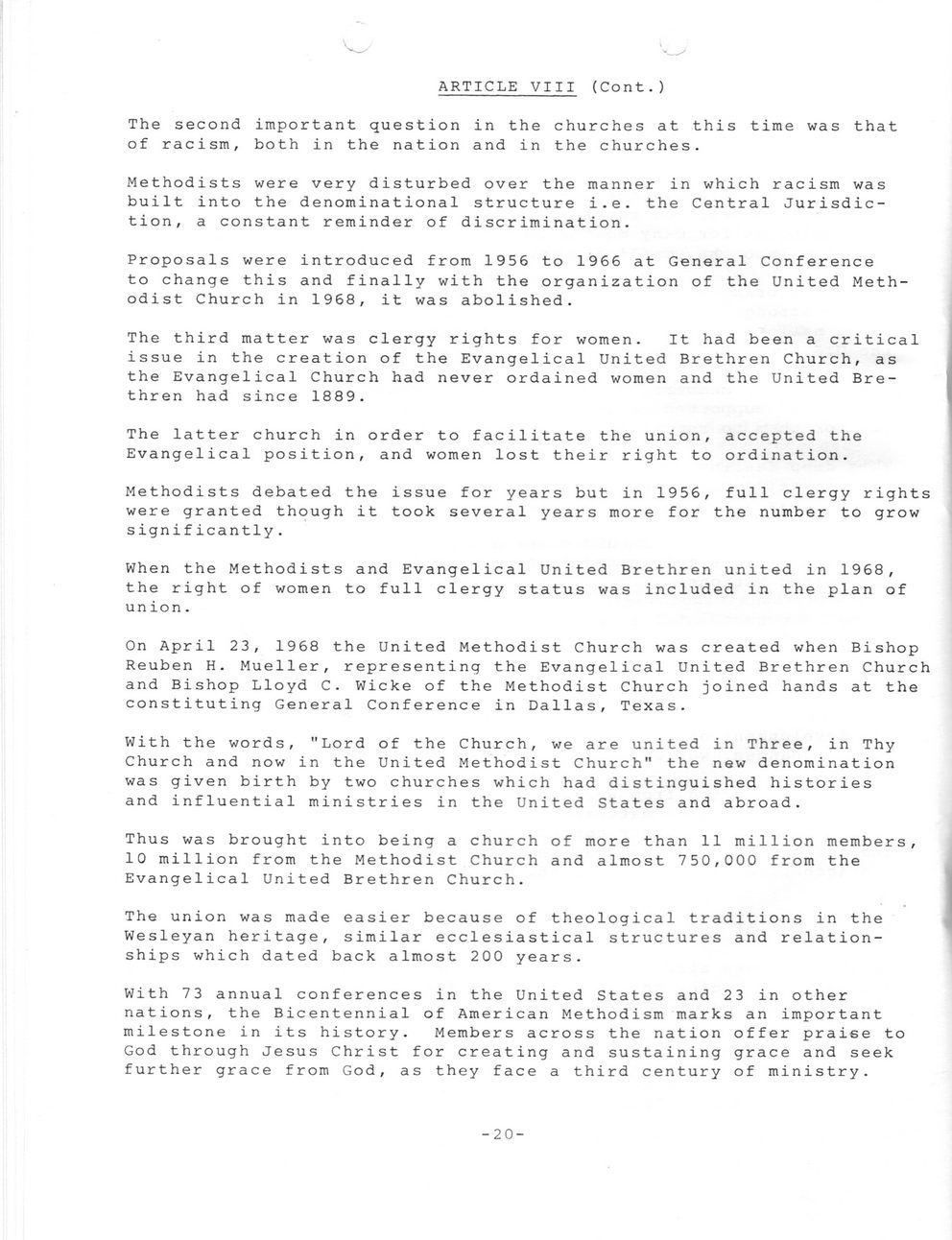This text was obtained via automated optical character recognition.
It has not been edited and may therefore contain several errors.
ARTICLE VIII (Cont.) The second important question in the churches at this time was that of racism, both in the nation and in the churches. Methodists were very disturbed over the manner in which racism was built into the denominational structure i.e. the Central Jurisdiction, a constant reminder of discrimination. Proposals were introduced from 1956 to 1966 at General Conference to change this and finally with the organization of the United Methodist Church in 1968, it was abolished. The third matter was clergy rights for women. It had been a critical issue in the creation of the Evangelical United Brethren Church, as the Evangelical Church had never ordained women and the United Brethren had since 1889. The latter church in order to facilitate the union, accepted the Evangelical position, and women lost their right to ordination. Methodists debated the issue for years but in 1956, full clergy rights were granted though it took several years more for the number to grow signif icantly. When the Methodists and Evangelical United Brethren united in 1968, the right of women to full clergy status was included in the plan of union. On April 23, 1968 the United Methodist Church was created when Bishop Reuben H. Mueller, representing the Evangelical United Brethren Church and Bishop Lloyd C. Wicke of the Methodist Church joined hands at the constituting General Conference in Dallas, Texas. With the words, "Lord of the Church, we are united in Three, in Thy Church and now in the United Methodist Church" the new denomination was given birth by two churches which had distinguished histories and influential ministries in the United States and abroad. Thus was brought into being a church of more than 11 million members, 10 million from the Methodist Church and almost 750,000 from the Evangelical United Brethren Church. The union was made easier because of theological traditions in the Wesleyan heritage, similar ecclesiastical structures and relationships which dated back almost 200 years. With 73 annual conferences in the United States and 23 in other nations, the Bicentennial of American Methodism marks an important milestone in its history. Members across the nation offer praise to God through Jesus Christ for creating and sustaining grace and seek further grace from God, as they face a third century of ministry. -20-

Main Street Methodist Church Document (032)